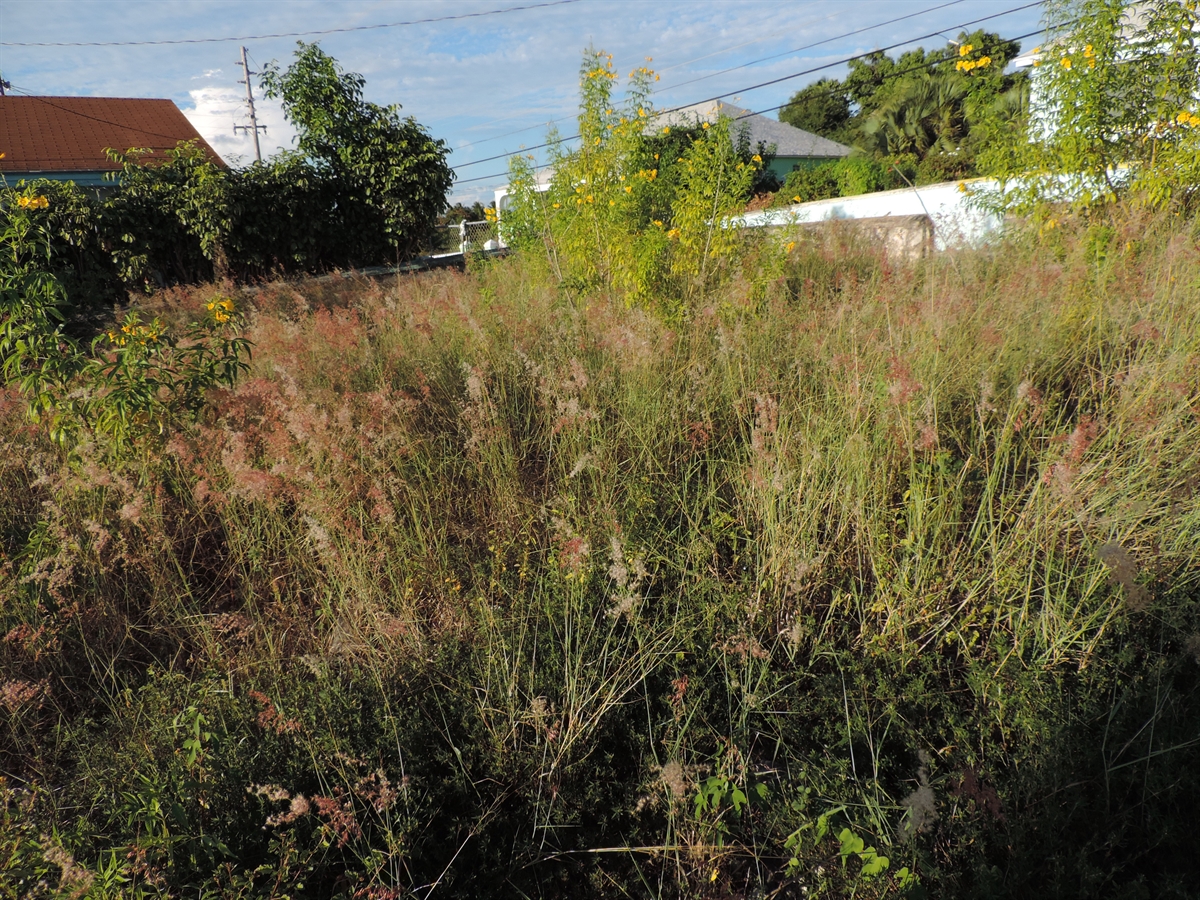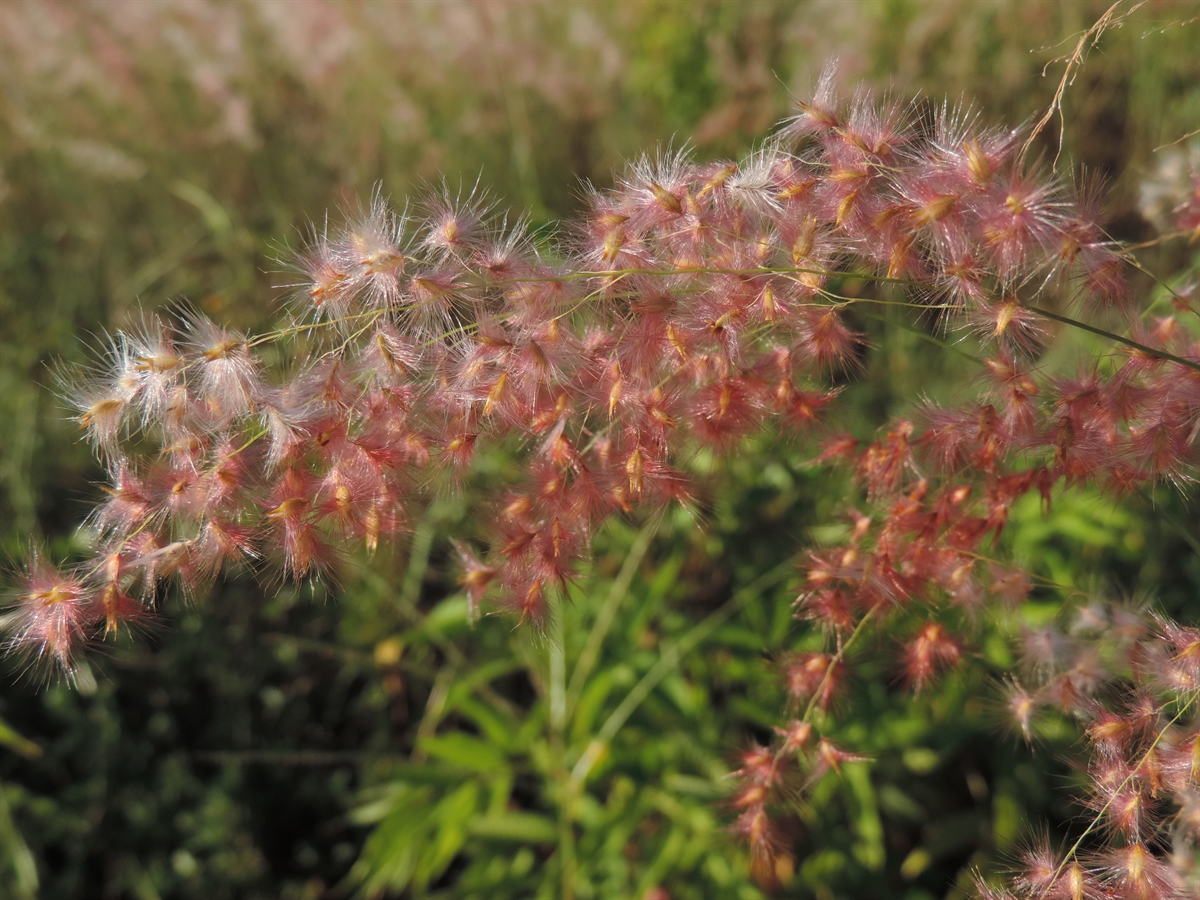Habit: Melinis repens grows as an annual to short-lived decumbent perennial up to 130 cm in height when flowering. The leaves are arranged alternately to 15 cm in length (usually shorter) with at basal sheath extending along the stem that is slightly pubescent. At the point of divergence of the leaf sheath to the leaf blade is a membranous ligule. The leaves are parallel veined. Stems and leaves are pubescent.
The zygomorphic flowers are arranged in a panicle of pubescent spikelets. At the base of each spikelet are 2 structures called glumes. The first glume small and the second larger and pubescent. In each spikelet there are flowering structures each is subtended by 2 additional structures (lemma and palea). There are two florets with the lower one sterile and reduced while the upper fertile with 3 stamens and a superior ovary each with a single locule and seed. The fertile floret has the lemma is extended at its tip as a short awn and both the lemma and palea have long, red/white/purple pubescence throughout. The fruit is a caryopsis.
Habitat: Melinis repens occurs in Human Altered environments (yard, old fields).
Distribution: Melinis repens is NOT native to the Lucayan Archipelago. It is native to Africa and the Middle East but has spread to all tropical and subtropical regions of the world.
Medicinal/Cultural/Economic usage: Melinis repens is not known to be used medicinally in the Lucayan Archipelago.


